Mummy with gold-foil 'tongue' found in sealed Egyptian tomb
Archaeologists found three tongues made of gold.

Archaeologists have discovered the remains of three ancient Egyptian inhabitants — a man, woman and child — outfitted with tongues of gold foil, a treasure likely intended to help them speak with gods in the afterlife, according to the Egyptian Ministry of Tourism and Antiquities.
The burials were found in two neighboring tombs. One of the tombs, which had been plundered by grave robbers, held the remains of the woman and a 3-year-old child, and it had a limestone sarcophagus with a lid shaped like a woman, according to Ahram Online. But the man's grave, from the 26th dynasty (664 B.C. to 525 B.C.), also known as the Saite period, was untouched.
"This is very important, because it's rare to find a tomb that is totally sealed," Esther Pons Mellado, co-director of the archaeological mission of Oxyrhynchus, told The National, a newspaper that covers the Middle East.
Related: 20 amazing animal tongues
Researchers with the Archaeological Mission of Oxyrhynchus, co-run by Egyptian Ministry of Tourism and Antiquities and the University of Barcelona, made the finding at the archaeological site of Oxyrhynchus, near the modern-day town of El Bahnasa, about 100 miles (160 kilometers) south of Cairo. Oxyrhynchus was the capital of the 19th nome, or province, of Upper Egypt, according to the mission's website. It's known for the Oxyrhynchus papyri, or ancient Greek, Latin and other languages written on hundreds of thousands of papyri that date from the third century B.C. to the seventh century A.D.
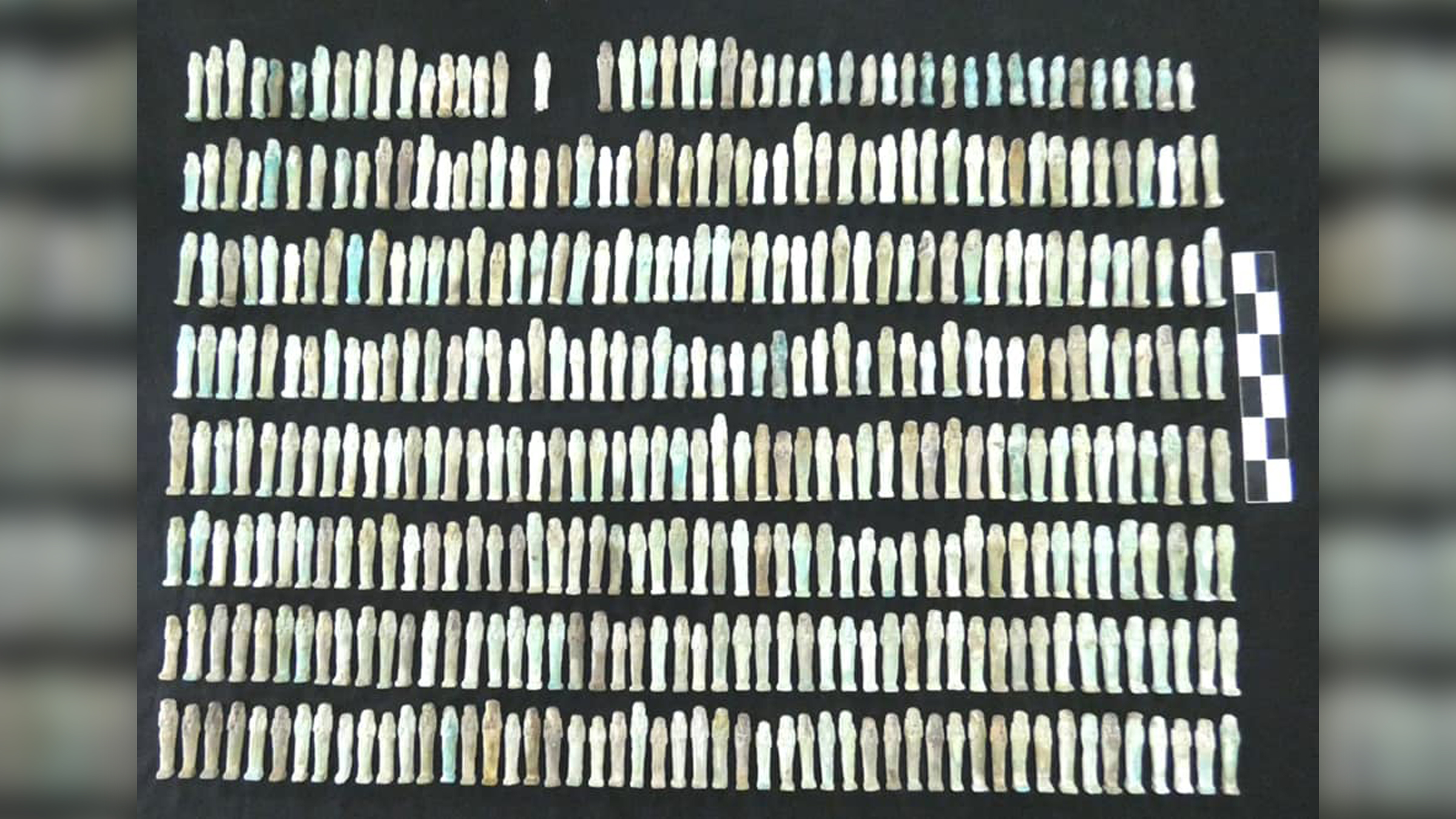
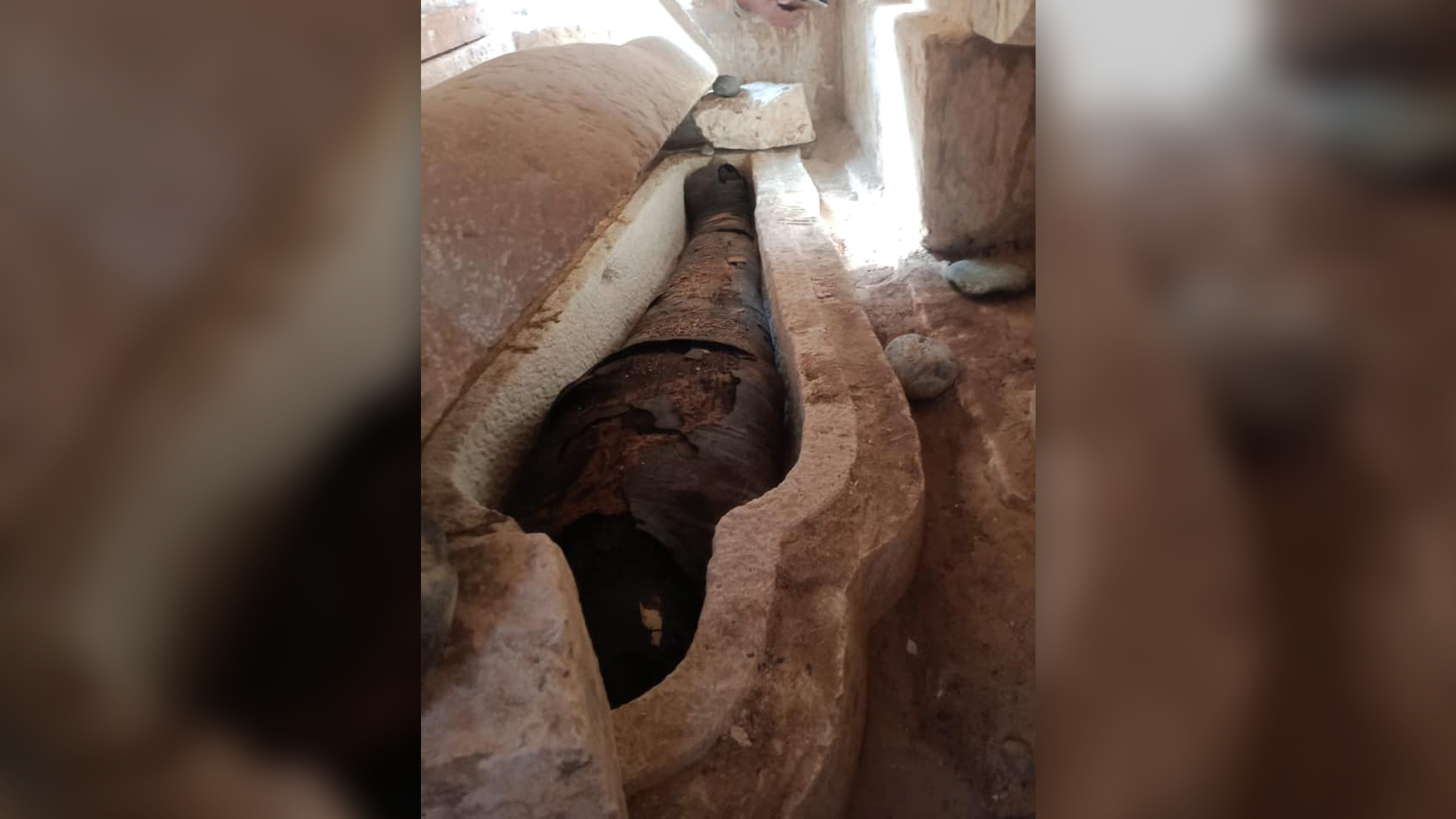
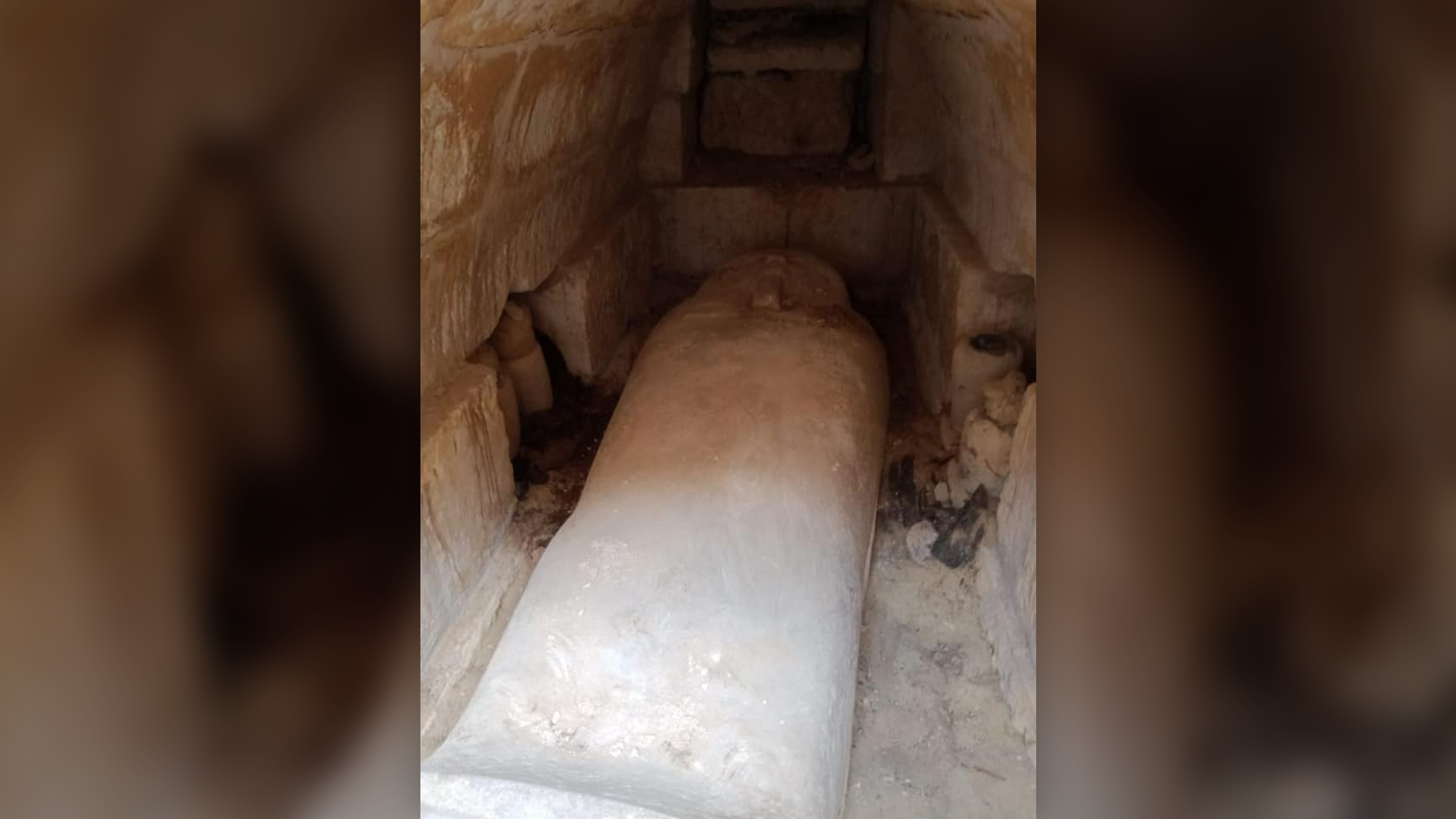
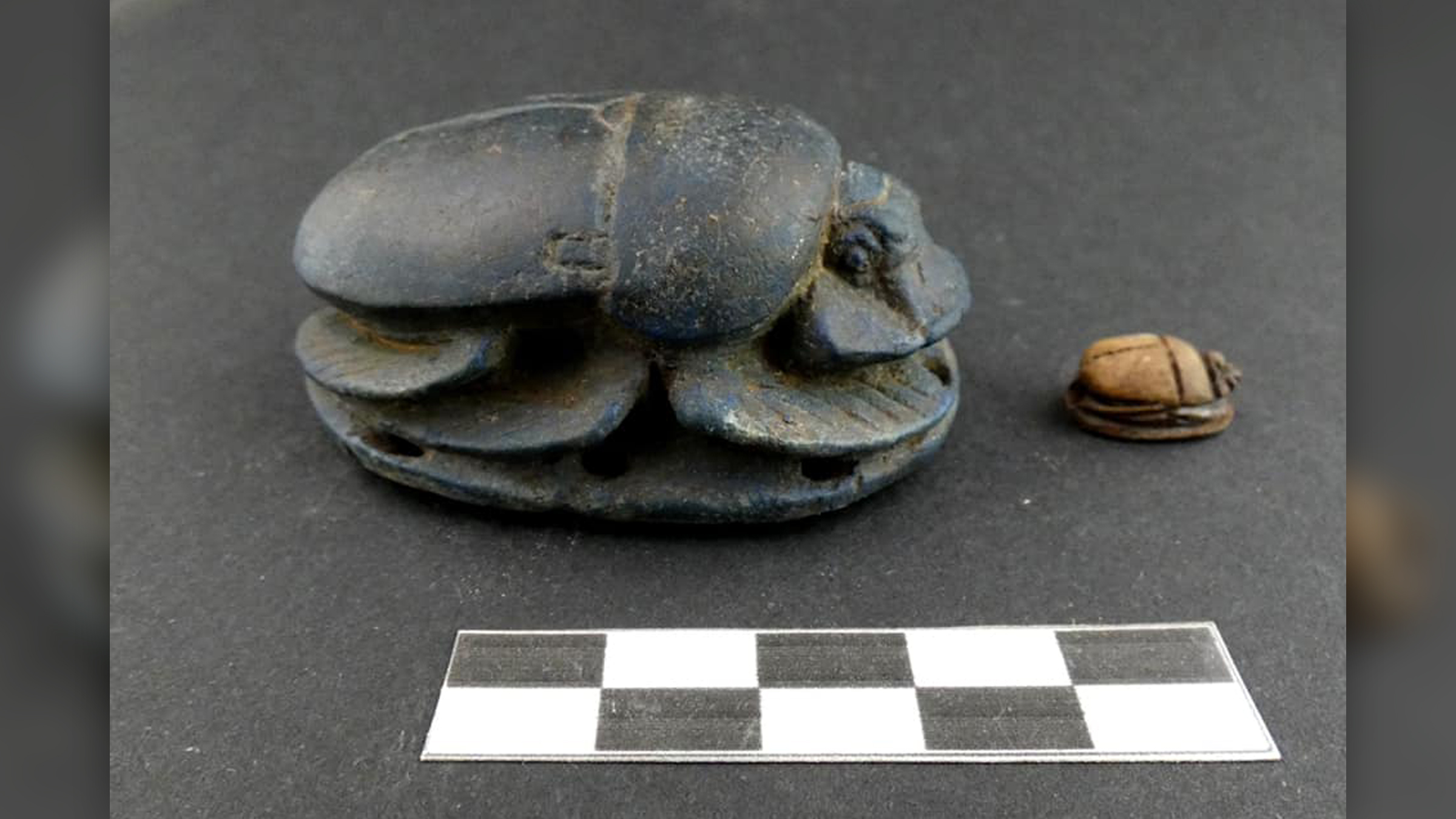
The two newfound tombs add to the ancient capital's history. The man's tomb contained a mummy interred within a limestone sarcophagus with a man-shaped lid, as well as four canopic jars designed to hold the deceased's organs, amulets including a scarab, green beads and about 400 funerary figurines, known as ushabti, crafted out of faience, or glazed ceramic, The National reported.
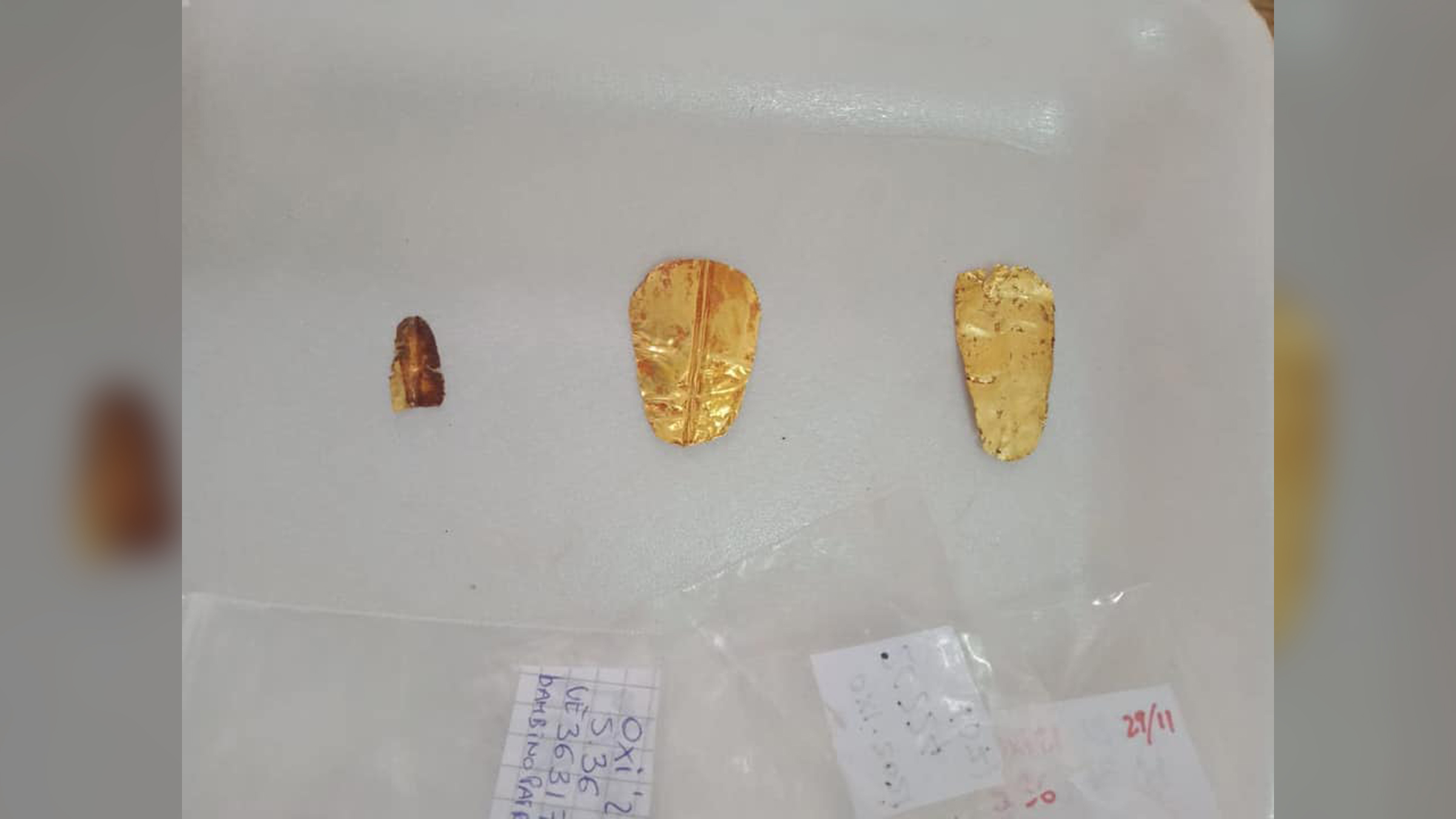
The identities of the man, woman and child are unknown, but archaeologists are hoping ongoing excavations will reveal more clues.
Sign up for the Live Science daily newsletter now
Get the world’s most fascinating discoveries delivered straight to your inbox.
This is the second time this year that archaeologists have found gold tongues in ancient Egyptian burials. In January, the Egyptian Ministry of Tourism and Antiquities announced the discovery of a 2,000-year-old mummy with a gold tongue at Taposiris Magna, an archaeological site on Egypt's Mediterranean coast. Perhaps that individual received a gold tongue to help him speak in the afterlife, especially to a deity like Osiris, the god of the underworld, Live Science previously reported.
Originally published on Live Science.

Laura is the archaeology and Life's Little Mysteries editor at Live Science. She also reports on general science, including paleontology. Her work has appeared in The New York Times, Scholastic, Popular Science and Spectrum, a site on autism research. She has won multiple awards from the Society of Professional Journalists and the Washington Newspaper Publishers Association for her reporting at a weekly newspaper near Seattle. Laura holds a bachelor's degree in English literature and psychology from Washington University in St. Louis and a master's degree in science writing from NYU.









